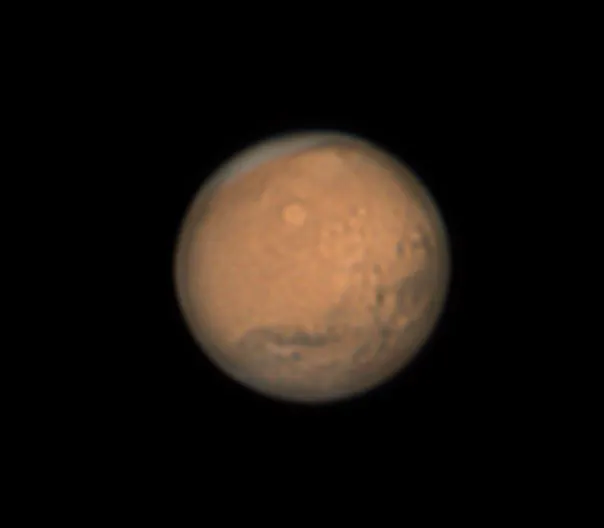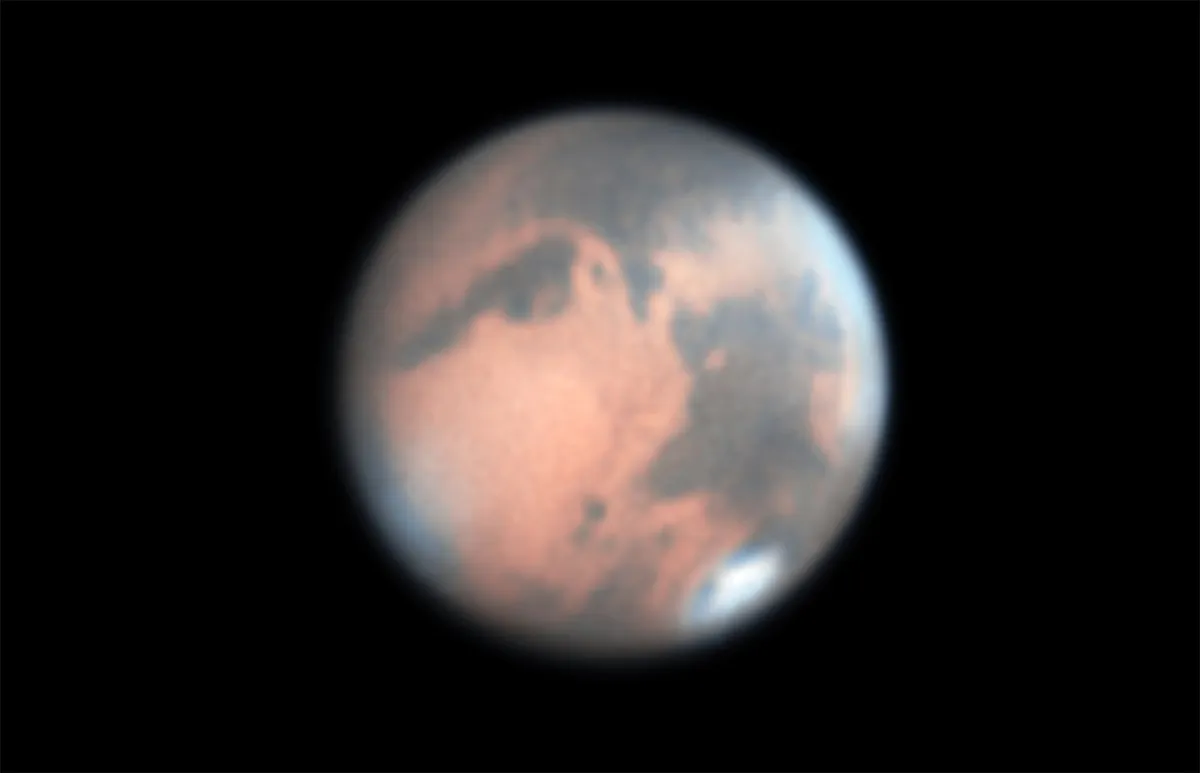Mars next reaches opposition in January 2025, which may seem like a long way away if you're a fan of observing the Red Planet through your telescope.
And if you are an avid Mars observer, it may currently seem like there's not much to get excited about, but the planet is still worth taking a look at through the eyepiece in June.
Mars is a mag. +1.0 morning object at the start of June 2024, rising 100 minutes before the Sun.

A 14%-lit waning crescent Moon sits 3.3° northeast of the planet on the morning of 3 June.
The pair will be visible together low in the east shortly after rising, say around 03:30 BST (02:30 UT).
By 30 June, although compromised by the lack of true darkness as seen from the UK, Mars begins to establish its presence in the morning sky as it rises ahead of bright Jupiter.
On 30 June, Mars rises around 02:00 BST (01:00 UT), which is nearly three hours before the Sun.

Observing Mars
Observing the planet through a telescope reveals that there’s not much to Mars currently.
Still at a good distance from Earth, it presents an apparent diameter of just 5 arcseconds at the end of June.
At such a size, seeing disc detail will require a moderate-sized telescope and, even then, as it’s at such a low altitude above the horizon, any surface markings will be very hard to make out.
Mars is currently moving east among the stars, heading for a conjunction with Uranus next month on 15 and 16 July.

As the nights start to lengthen after the June solstice, the area Mars is located in will appear darker in the early hours.
After what has been a challenging few months with the planets, the situation is thankfully improving, with a stunning scene forming within Taurus over the next few weeks.
And, of course, Mars opposition will occur on 16 January 2025.
We’re not there yet, but it’s always good to get a handle on where things are to ensure you’re ready for when the planets start to get good again.
Quick facts
- Best time to see: 30 June, 03:50 BST (02:50 UT)
- Altitude: 15°
- Location: Aries
- Direction: East
- Features: Surface markings, weather
- Recommended equipment: 150mm scope or larger
This guide appeared in the June 2024 issue of BBC Sky at Night Magazine
